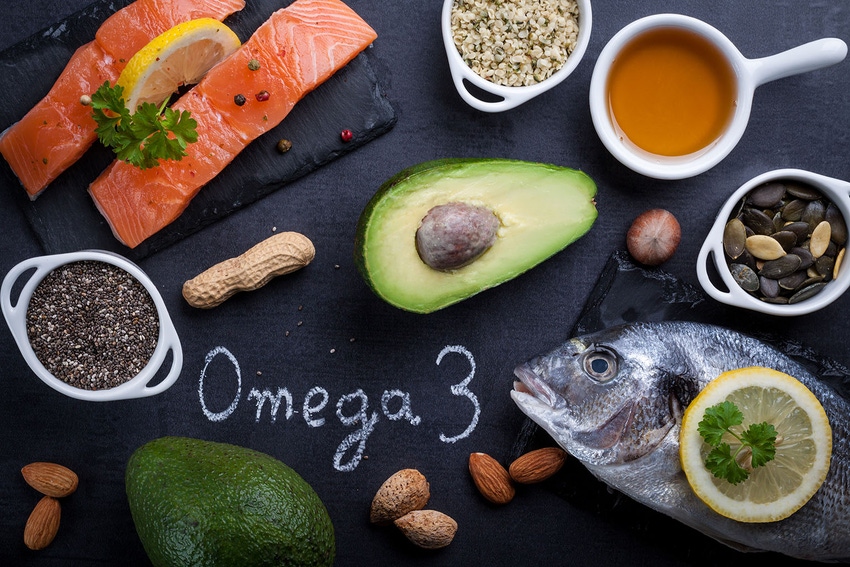While the human Asian market may be more interested in omega-3 meat products, the biggest demand for the products in the United States has been through the pet food sector.

Earlier this month I came across an article in the Academy of Nutrition and Dietetics, “Do Kids Need Omega 3 Fats.” Essential fatty acids that help feed the brain and keep it healthy, omega-3s are known for their role in neurotransmitter function and helping to manage psychological and behavioral condition. Some studies have also linked poor reading ability with low levels of a certain type of omega-3 fat in children, and supplementation was associated with improved memory function.
It caught my eye, first because I have a 3-year-old boy who we are trying to prepare for preschool, and second, because it reminded me of a recent conversation I had with Dennis Nuttelman, a sales representative with XFE Products.
The article suggests if your kids aren’t into fish, try using flaxseed oil — a great source for one of the omega-3 fats: alpha-linolenic acid. The registered dietitian suggests adding a teaspoon to a smoothie or mixing it up with peanut butter for toast and sandwiches.
The pork industry isn’t a stranger to the concept of using feed enhanced with flaxseed or linseed to enrich meat with omega-3s, however those best intentions always seemed to result in an off-flavor or discoloration in meat from the animal.
“You really can’t get good meat taste out of extruded flax or other processed methods, because oxidation of the meat turns it. People don’t like the fishy taste,” Nuttelman says.
That previous industry work didn’t sway Nuttelman and the folks from XFE Products from working with flax and other ingredients in diets to build up omega-3s in pork; it only fueled the fire to finding a way for the meat to scientifically pass the consumer taste test.
After developing a propriety diet formulation, high in flax and canola as well as other essential ingredients, and feeding it to pigs at Omega-3 Family Farms in Columbus, Neb., where Nuttelman is one of the members, XFE Products took the enriched-pork product to Kansas State University in 2017 to test for flavor, tenderness and shelf life.
John Gonzalez, a meat scientist at KSU led the research, finding that not only did the omega-3 content in the consumer meat product increase by 178%, but subsequent taste tests with trained panelists showed that there was no reported difference in the taste, color, tenderness or shelf life of the meat.
“That’s what makes this product very unique compared to anybody else’s feed [formulation] ... flax, canola, ground flax, all the other processes that take place in North America ... and that’s why we’ve had success with the product,” Nuttelman says.
XFE Products, based in Des Moines Iowa, and Stromberg, Neb., is a part of XF Enterprises based in Hereford, Texas. In 2015, Nuttelman brought his clients of pork producers together from Nebraska and Minnesota to form a company, Omega 3 Family Farms. Omega 3 Family Farms has marketed the meat on the East Coast, but due to packer control in the Midwest have only been able to really market through private meat deals in Wisconsin and Minnesota. Omega 3 Family Farms’ product offering includes omega-3 meats, dairy products and eggs and has negotiated a contract with a large Korean-based omega-3 company to begin delivering all of these products to the Asian market.
While the human Asian market may be more interested in omega-3 meat products, the biggest demand for the products in the United States has been through the pet food sector.
“We do a phenomenal amount now of omega-3 pork and beef in pet treats and that is just turning the pet industry upside down on pet treats,” Nuttelman says.
Today Nuttelman works with a group of pork producers out of Nebraska, Minnesota and Iowa who feed the proprietary diet formulation to their herd and has received three USDA grants to aid in marketing the value-added products at the consumer level. While he hopes to reach more consumers with the heart-healthy meat option on the shelves, the endgame is for his producers to make more money, Nuttelman says.
“I mean the goal in doing something like this would be to have a producer probably make $20 more per head,” Nuttelman says. “It doesn’t cost them anything more to do what we’re doing, other than a little bit more time and labor because his feed ration has to be a little bit different, but the performance of the pig even offsets the cost of the feed and is phenomenal.�”
While the University of Missouri, Massachusetts General Hospital and Harvard Medical School scientists have been able to genetically modify pigs to produce omega-3 fatty acid, the gene editing technology is currently held up through the Food and Drug Administration’s rigorous regulatory approval and must meet consumer approval before producers will have access to adding those genetics to their systems. However, through the XFE’s feeding program, Nuttelman says producers could capture that value-added market now.
“My main goal is to address how producers make money out here,” Nuttelman says. “This last year has been absolutely the worst year in 10, 12 years for hog producers and where they’re at and what they’re doing. My goal is trying to find something that’s value added to do that. There are many valued-added markets out there and all are good, organic, non-GMO, ABF and free range, but none of these bring the value of nutritional support that omega-3s will do.”
About the Author(s)
You May Also Like





